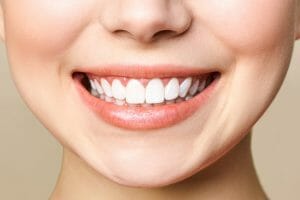 When Serious Problems Arise, See Us First
When Serious Problems Arise, See Us First
When gum or tooth disease happen, they generally fall into one of these three categories:
- Periodontal: Affecting the gums
- Endodontic: Involving the pulp of the tooth (root canal therapy)
- Occlusal: How well the upper and lower teeth come in contact with each other
Hicks Family Dental has treatment solutions to these issues that we can often spot during your twice-yearly exams. The earlier we treat you, the better the outcome.
Periodontal: Gum Disease
Are your teeth loose or changing position? When you brush or floss, are your gums prone to bleeding? If so, these symptoms are the primary indicators that you’ve developed periodontal (gum) disease.
In fact, gum disease, not tooth decay, is the number-one reason people lose their teeth. Fortunately, if the infection is treated in the milder stages, it can be reversed with nonsurgical methods.
The American Dental Association’s research shows 8 out of 10 people in the United States have gum disease. The bacteria that poison your teeth and gums can end up in your bloodstream, creating problems in your heart, lungs, and other organs. If your health is already compromised, gum disease may make things worse.
Most dental insurance plans provide coverage for non-surgical treatments that, combined with diligent at-home care, can effectively stop the spread of the disease. Surgery is often required for extreme cases.
Hicks Family Dentistry, offers an antibiotic called ARESTIN™ that is applied at the point of infection. It works continually to kill the bacteria.
We also restore health to your gums by deep-cleaning your mouth to with scaling and root planing.
With scaling, we remove the plaque and tartar along your gum line, all the way to the bottom of the pocket. With a clean, tartar-free gum line, your mouth is now ready for healthy growth.
Root planing takes the cleaning a step further. We smooth the roots of your teeth to make it easier for them to reattach to your teeth.
By doing this, we are preparing your mouth for healthy growth. Root planning reduces the chance for future inflammation and bleeding to take place.
Periodontal therapy may take multiple appointments to ensure proper treatment.
Occlusal: Tooth Alignment Disorder
Every time your top and bottom teeth meet, forces are created. When your teeth are properly aligned, they, along with muscles, the jaw and jaw joint, work together to withstand these forces. But when teeth are not properly aligned, these forces can wreak havoc on your teeth, muscles and/or jaw joint. This imbalance is called occlusal disease.
What Are the Symptoms of Occlusal Disease?
- Wear on the tooth enamel, uncovering the next layer called the dentin
- Loose or moving teeth
- Sensitive teeth
- Sore teeth
- The muscles, which work the jaws, can become sore and painful and cause headaches.
- The jaws joints become symptomatic – noise such as popping and clicking during eating or jaw movement is common, and there may be pain in the jaw
What Happens if Occlusal Disease is Left Untreated?
If occlusal disease is not treated the problems may worsen over time. Teeth can wear out prematurely and may be lost. Muscle and jaw problems can cause greater discomfort. Treatment options become more complex and can cost more.
How is Occlusal Disease Treated?
Treatment can include mild reshaping of the teeth to stabilize the bite, restorations of worn teeth, orthodontic treatment to better align the teeth or a combination of all three.
